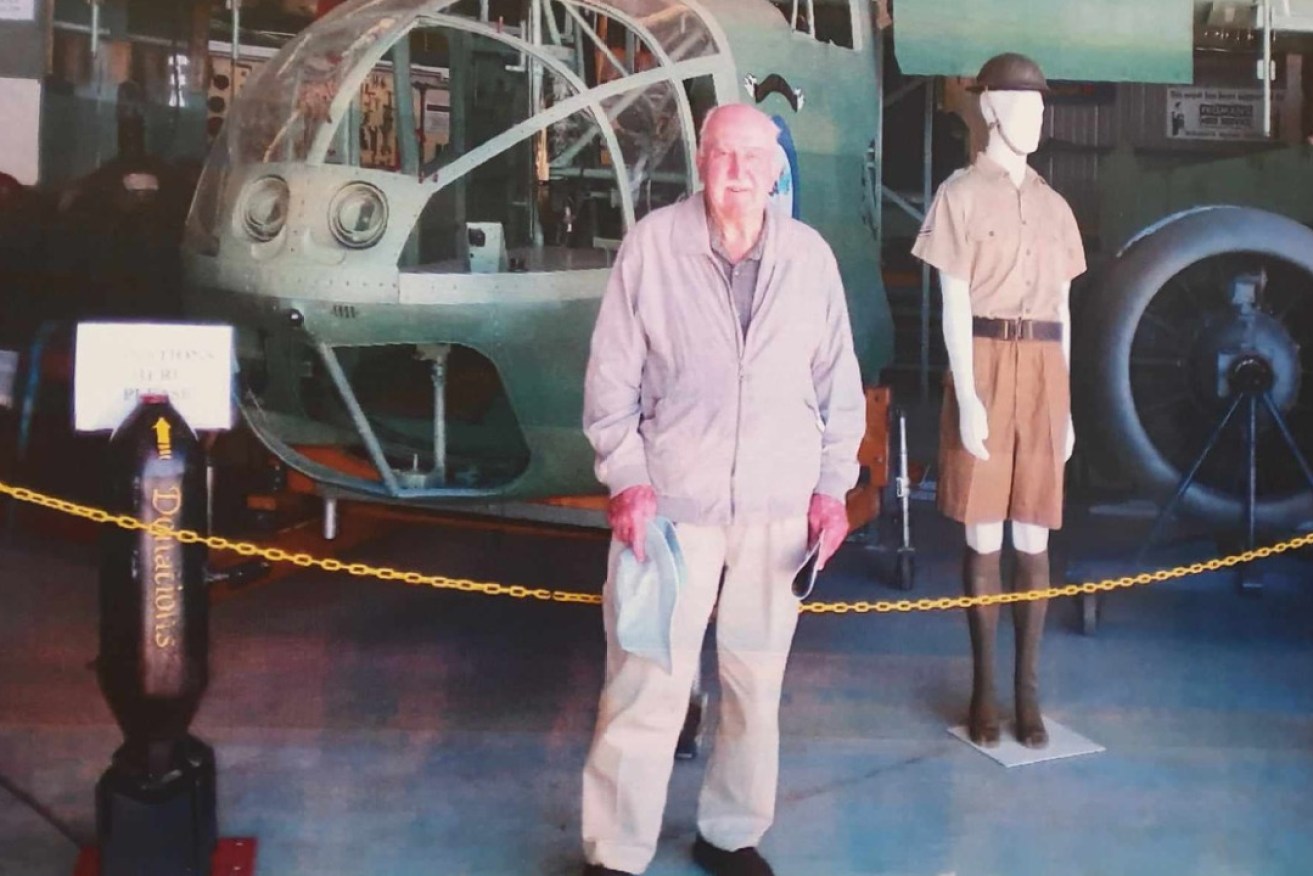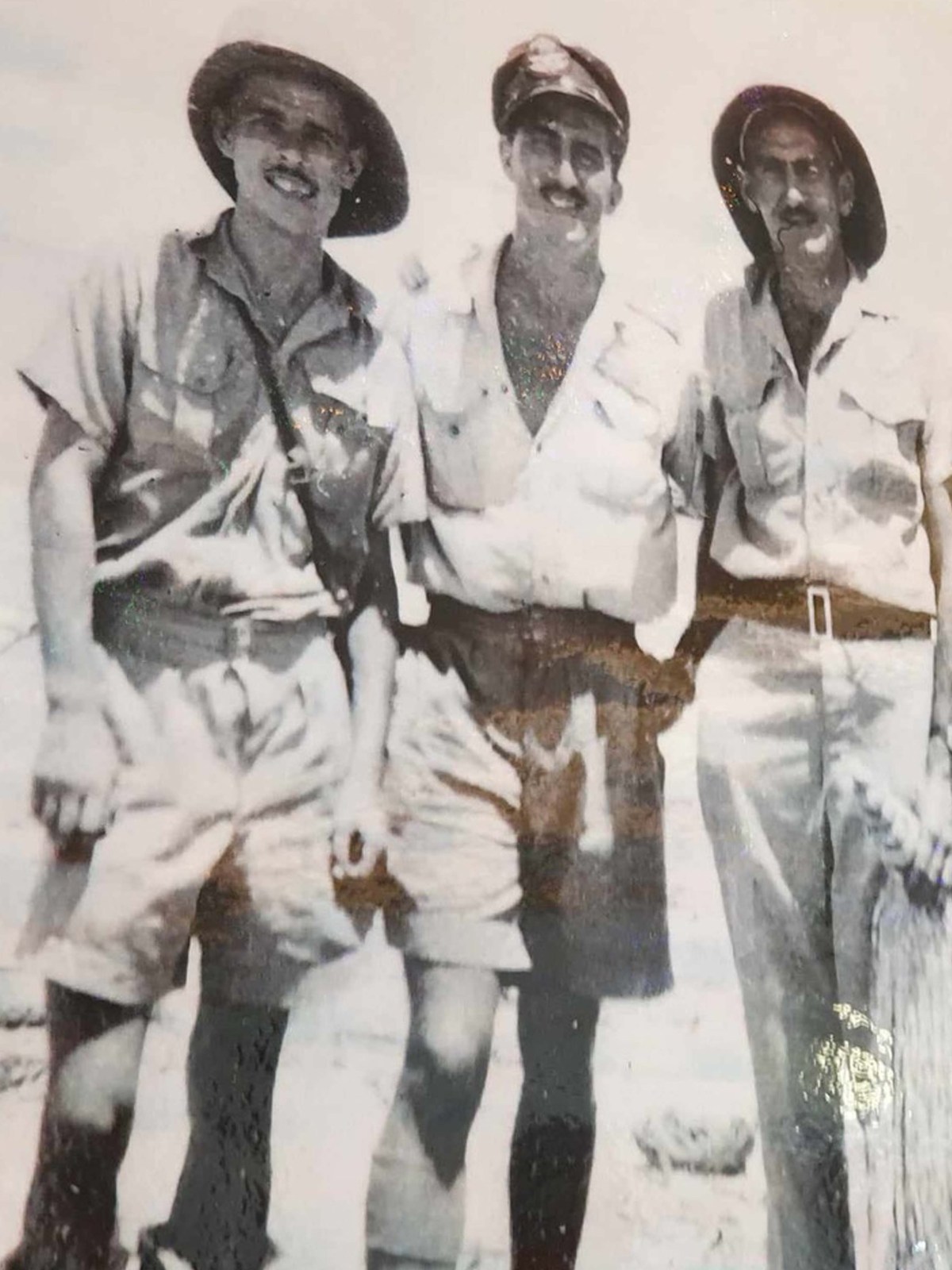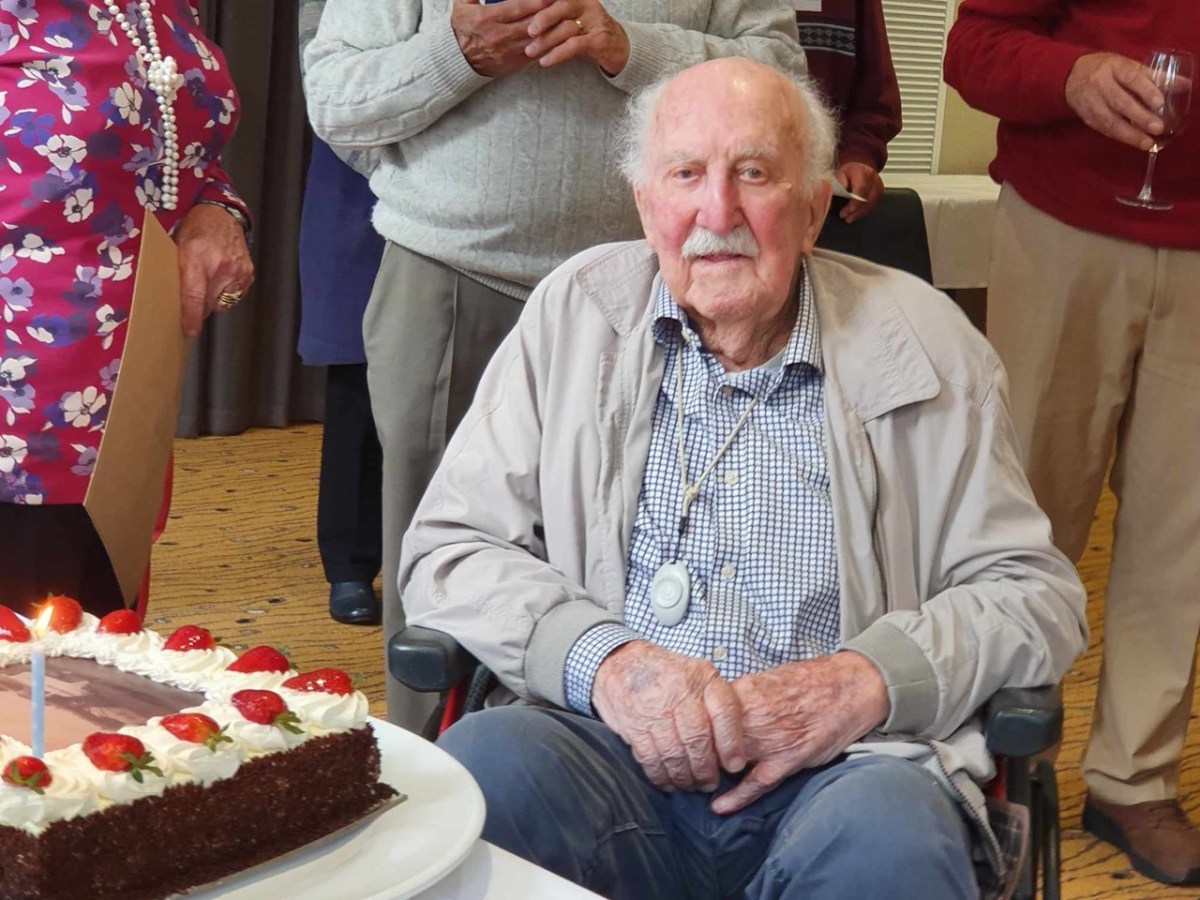Vale WWII veteran Alf Humble – a man of rare achievements
Obituary: Alf Humble, RAAF pilot and veterinarian. Born December 11, 1919, Adelaide; Died September 26, 2023, Port Elliot.


Alf Humble was the last surviving member of his squadron. Supplied image
The sun has set on yet another Adelaide World War II veteran – this one, a rarity as a ‘vet Vet’ and Australia’s first flying veterinarian, who has died at the age of 103.
Alfred Ernest Humble, RAAF service number 416429, had been a veterinary science student at Roseworthy Agricultural College when war was declared in 1939. He trained with other students for the Light Horse Regiment at Gawler. Later, he was transferred to the RAAF at Victor Harbor, with his pilot wings gained at Geraldton on December 11, 1941.

Alf Humble (centre) with fellow servicemen. Supplied image
He was posted to a navigator/reconnaissance course at Laverton, but the shortage of aircraft at that time resulted in his posting to North East Area Headquarters at Townsville as a plotting officer. In May 1942 he participated in the plotting for the Coral Sea Battle – a victory for the Allies.
While at Townsville, he made a few visits to the Animal Research Station at Aitkenvale. Townsville was bombed three times, and a few trees were blown over on the research station.
During his time in Townsville, he made a few trips as supernumerary crew on flying boats going to Port Moresby and Milne Bay at the most interesting time of the Kokoda campaign and prior to the Milne Bay battle of August 1942.
He was then posted to No.1 Operational Training School at Bairnsdale, Victoria, popularly known as Death Valley and probably the most dangerous part of his RAAF career. His instructor had three pupils and Alf was the only survivor. He was glad to be subsequently posted to air operations in northern Queensland. This involved plenty of flying including a combat tour with No. 7 Sqn. RAAF 25/2/43 to 4/1/44.
During this period No. 7 Sqn RAAF flew Beaufort medium bombers out of north Queensland, escorting convoys in northern waters. The squadron sank a Japanese submarine, shot down two Japanese seaplanes, damaged several others, and bombed Japanese airfields. Alf flew a lot of different aircraft including Ansons, Catalinas, Wirraways, Lockheed 12s, and B26 Marauders, but mostly Beauforts.
After a stint in Brisbane, Alf was discharged in December 1945, having flown 515 combat hours over 90 sorties as well as much non-operational flying. His medal awards for war service included the ’39-’45 Star, Pacific Star, Australian Service Medal, and the War Medal.
Back in Adelaide, and now with a family, there were some tough years before he scored from 20th Century Fox the job of veterinarian in the film Kangaroo that they were making at Port Augusta. The job resulted in a number of funny situations dealing with unruly kangaroos and one with an unruly actress, none other than Maureen O’Hara who slammed her dressing room door in his face when he informed her that her horse was ready to mount.
He then took a job in Mt Gambier as the first District Veterinary Officer (DVO) in South Australia. There were years of veterinary practice in Mt Gambier and the South East: dairy and beef cattle, active racing and trotting clubs, and a significant small animal component from the town.
A kick in the elbow caused a career change and sent him back to flying, this time out of Alice Springs to participate in the eradication of contagious bovine pleuropneumonia (CBPP), a time of epic blood testing and the flying of blood samples. Pasteurella turned out to be the real issue for the cattle but it took some effort to convince the National Committee for the Eradication of Pleuropneumonia that it was already effectively eradicated.
With his own Piper Twin Comanche aircraft he went on to conduct monthly clinics at Woomera, Coober Pedy, Leigh Creek, and Port Lincoln.

Alf lived his later life in Victor Harbor and Port Elliot. Supplied image
Once in his veterinary flying career, he flew a circuit to Broome, Bali, Kuching, Brunei, Singapore, Jakarta and back to Adelaide: a long trip. He loved flying and was extremely good at it, something noted in his war service reports. Once he attended an Australian Veterinary Association conference at Surfers Paradise, flying non-stop from Adelaide in about four hours.
There were trips to the Middle East on sheep and cattle transports, flying home mainly from Bahrain or Cairo, the round trip taking about three weeks
In 2000, Alf retired and gave up his flying licence, albeit still doing a few cross-country trips and property inspections by land vehicle. In his latter years, he resided at Victor Harbor and Port Elliot. He never lost the “feel” for flying that had been ignited back in those years of WWII.
He was the very last surviving member of No 7 Squadron.
He is survived by daughter Meredith, son Christopher and grand- and great-grandhildren.




